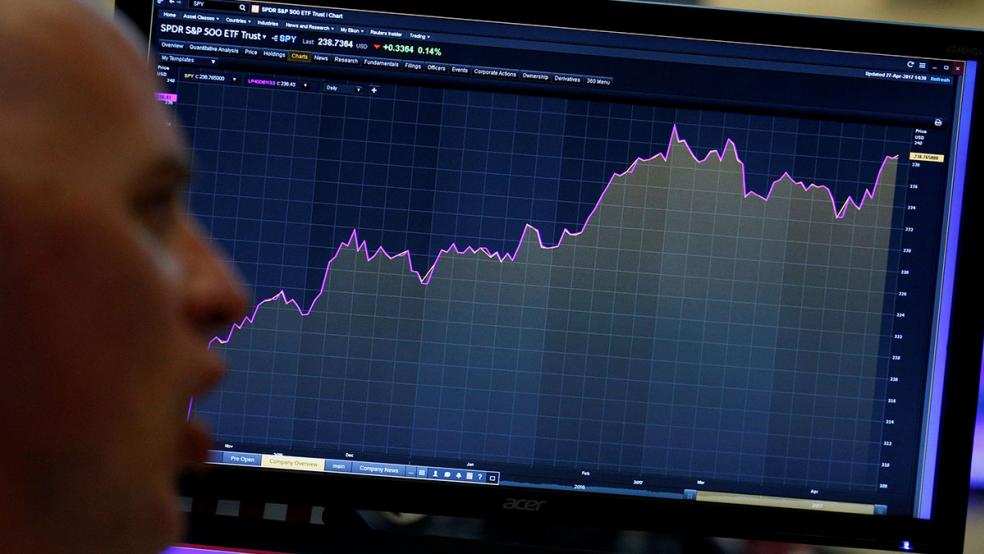Are you familiar with the boiling frog metaphor? The idea — popular but untrue — is that a frog, if dumped in boiling water, will jump out in terror; but placed in tepid water, slowly heated, he'll sit there until he dies.
A similar dynamic affects people during the heights of market bubbles.
Looking from the outside in, shares of Pets.com circa 1999 or a McMansion in Phoenix circa 2007 seem like terrible ideas. But in the heat of the moment, with emotions like greed and envy in full swing, the ebullience seems justified. I've seen close friends and family members get sucked in, refusing to acknowledge hard facts. Only later, with the fever broken and capital lost forever, does the 20/20 clarity of hindsight reveal the absurdities.
Related: How Oil Prices Could Ruin the Stock Market Party
We could very well be in a similar situation now, as the Nasdaq Composite pushes toward 6,100 amid mixed big-tech earnings and a very weak first-quarter GDP report. One must ask: What exactly is justifying this ongoing confidence?
After all, stocks have only been more expensive — based on a cyclically adjusted price-to-earnings (CAPE) ratio — two other times in history: The manic runup to the 1929 and 2000 market bubble peaks.
As Yale economist Robert Shiller noted last week, the CAPE ratio was about this high in 1998, but it kept rising as the dot-com bubble kept inflating. "We could go back up there, and we're in an oddball enough mood that we might," Shiller said. "So I'm not saying pull out of the market — I'm saying that it looks dangerous now, but it could keep going up."
This week has provided further evidence: One by one, the motivators of the epic post-election rally have been severely weakened. And yet Wall Street has largely ignored the shifts. If this isn't irrational exuberance, I don't know what is.
Related: Why It's Time for US Investors to Start Looking at Foreign Stocks
On the political front, there was lingering disappointment with the "big league" tax reform proposal from President Trump's team last week, which lacked specifics and faces uncertain prospects in Congress. Teased for months, the plan (well, a broad framework so far) was less ambitious than Trump's campaign pledges yet still manages to add trillions to the national debt over a 10-year budget window.
A second push on health care reform (after an embarrassing failure in March) may still pass the House, but also faces an uncertain future in the Senate.
On earnings, Alphabet (GOOG) and Amazon (AMZN) both reported better-than-expected numbers last Thursday. Microsoft (MSFT) reported earnings of 73 cents per share (vs. 69 cents expected) on $22.1 billion in revenue (vs. $23.6 billion expected). Intel (INTC) reported earnings of 66 cents per share (vs. 65 cents expected) on $14.8 billion in revenues (in-line with estimates), yet shares initially dropped on concern over its Data Center Group, a cornerstone of its post-PC strategy.
Related: Tesla Is Most Painful Stock for Short Sellers in 2017
FactSet reported last week that the first-quarter earnings growth rate for S&P 500 companies, based on actual reports and projections for the announcements still to come, was at 12.5 percent — which would be the highest since late 2011. But even the strong first-quarter earnings can’t fully justify the gains we’ve seen, and looking ahead to the second quarter only raises more concerns.
Among those: Crude oil keeps sliding from its mid-April high on concerns of an oversupply, which will weigh on energy sector results in the second quarter. And a tighter job market is increasing wage pressure and boosting labor costs, which will weigh on earnings.
Other headwinds are increasing as well. U.S. GDP expanded just 0.7 percent in the first quarter on a mere 0.3 percent increase in consumer spending — despite months of survey data showing off-the-charts consumer sentiment — for the worst result since the fourth quarter of 2009. At the same time, the Federal Reserve is still looking at an aggressive pace of rate hikes. Trade tensions are rising. And whole economy profits remain about a $100 billion below their late 2014 high — a drop of nearly six percent during which the Nasdaq rallied nearly 30 percent.
Does this all seem justified to you?






